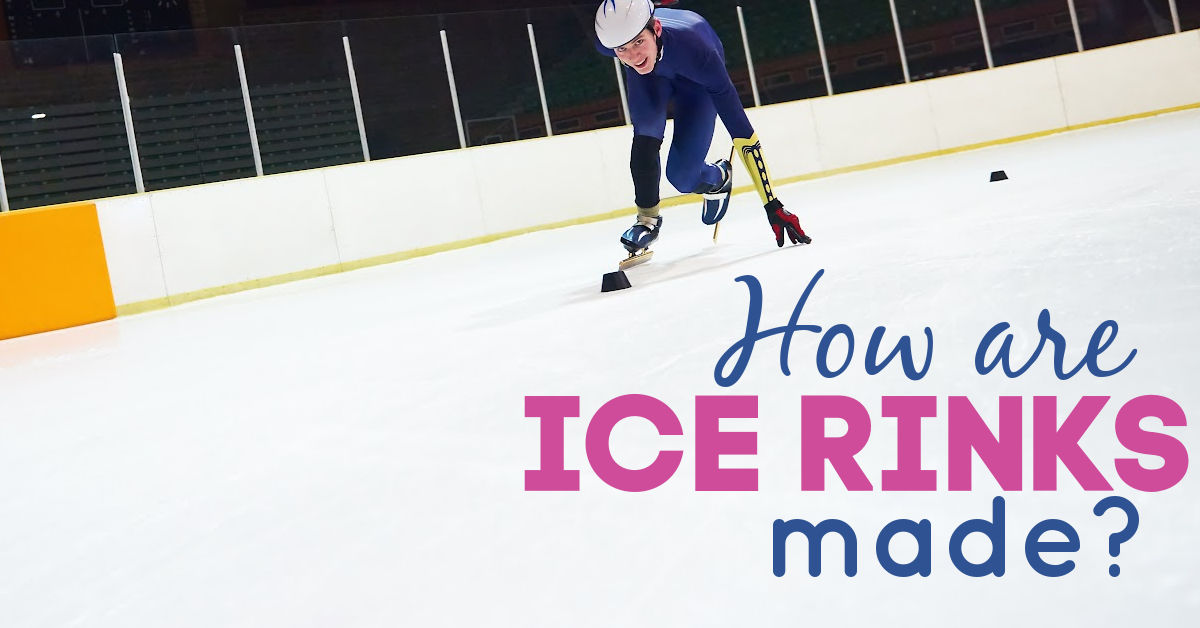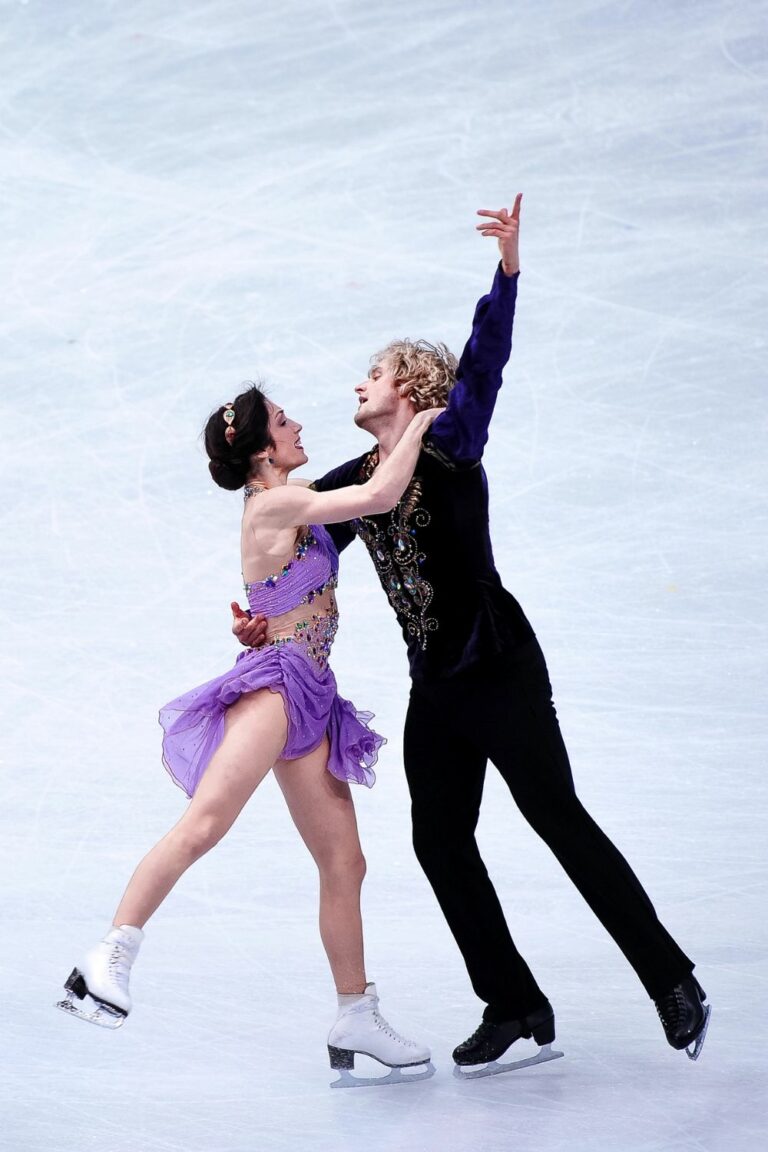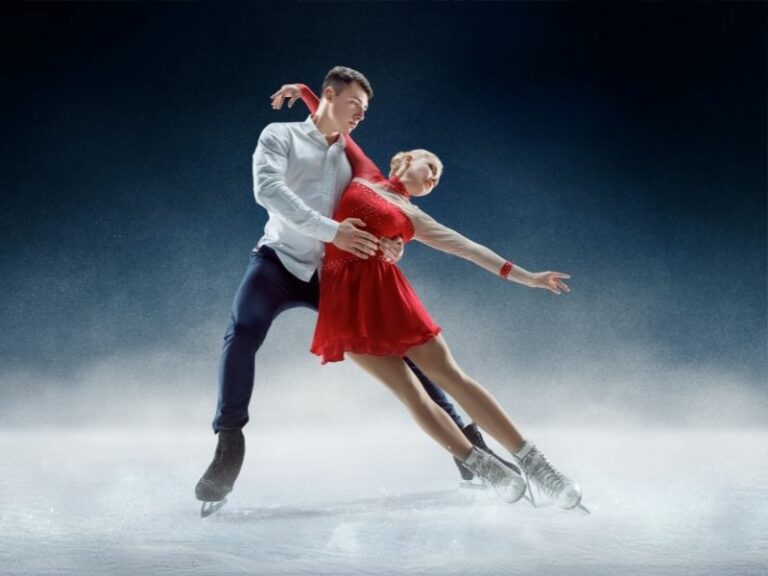How Are Ice Rinks Made?
It’s that time of year again! The trees are decorated with twinkling lights, holiday music is playing on the radio and skating rinks are popping up all over town. But have you ever wondered how those sparkling ice surfaces are created?
It might seem easy to make an ice rink – pour some water, wait for it to freeze and then get your skates on but in fact, there is an art to getting that smooth ice surface that is perfect for ice skating.
In this post we will teach you how indoor ice rinks for winter sports are made as well as how to make your own backyard ice rink at home.

This post may contain affiliate links. Please read my disclosure for more information
How Are Ice Rinks Made?
Most ice rinks are made by freezing fresh water in a large, flat area. This is basically the same whether we are talking about outdoor rinks or an indoor rink. Of course, the entire process is a bit different for each kind of kind and the quality of ice differs too.
Let’s look at how each type of ice rink is made:
How Are Indoor Skating Rinks Made?
Indoor ice rinks that are used for hockey and figure skating in all kinds of climates (there are even ice rinks in malls!), are the most complicated and expensive to make.
This is because indoor arenas need a refrigerated ice rink to keep the sheet of ice hard enough to skate on without having the indoor air be too cold for skaters.
Here is how the ice rinks were made at the Vancouver Olympics:
Making The Ice Rink
First the actual rink needs to be created
A layer of concrete is poured into the ground and allowed to cure. A system of pipes is embedded in the concrete floor and will run coolant through the ice as part of the refrigeration process.
Once the concrete pad is cured, a metal frame is installed on top of it. This frame will serve as the mold for the rink’s walls.
The cooling system
The cooling system is turned on and a saline solution (known as the brine or salt water) flows through a series of pipes that are embedded in the concrete slab where the ice will sit and cools it.
Prepping the ice rink
A thick rope is laid in place where the edges of the ice will be to contain the water that will be sprayed.
Adding Ice
When the concrete is cooled, ice makers spray thin layers of water over the surface and freeze them.
Painting
After the first three layers, a layer of paint is sprayed and sealed. After a few more layers are sprayed and frozen, any hockey markings or corporate logos are painted onto the cement slab so that they will show through the ice.

Resurfacing
Once the desired thickness is reached, the Zamboni machine smooths out the surface of the ice (named after Frank Zamboni).
The rink is then usually surrounded by boards to contain the ice. Ice rinks can also be made by using a special machine that freezes the water as it is sprayed onto the surface.

How Are Outdoor Ice Rinks Made?
Most people don’t think about how ice rinks are made, they just enjoy skating on them. Making an outdoor ice rink is actually a pretty simple process. In fact, many people in cold climates make them in their backyard!
There are three kinds of outdoor ice rink.
- Refrigerated ice rinks are made in the same way as the indoor rinks above. The ice is kept solid through the use of pipes underneath the ice.
- Backyard rinks or non-refrigerated rinks
- Ice rinks on a frozen body of water such as frozen ponds and lakes.
How To Make a Backyard ice rink
First, the area where the rink will be is leveled off and cleared of any debris. Then, the walls and floor are lined with plywood or another material that will keep the water from seeping out.
Normally a plastic liner is placed at the bottom of the rink in place of concrete.
Outdoor rinks use natural ice so gallons of water are poured onto the liner in layers and left to freeze. If you add all the water at once, you risk getting a very uneven surface of ice.
How To Make An Ice Rink: FAQS
How Thick Are Ice Rinks?
The thickness of the ice varies depending on what the rink will be used for.
According to the International Olympic Committee for the Vancouver 2010 games, ice thickness varies slightly between figure skating and short track speed skating.
Figure Skating: Thicker (approximately 4.5 to 5 centimetres) and softer ice is needed for figure skating
Speed Skating: Thinner (3.5 to 4.5 centimetres) and firmer ice is required for short track speed skating.
Ice Hockey: Thinnest: Hockey ice is approximately 2.5 to 3 centimetres thick
How Long Does It Take To Make An Ice Rink?
It takes about 3-5 days to make an indoor rink. For outdoor rinks, a lower temperature will speed up the process while warmer weather will mean the water won’t freeze.
How Do Ice Rinks Stay Frozen?
Indoor rinks are keep frozen through the refrigeration system which constantly sends cold water and salt to the surface of the ice. This mixture melts any snow that may be on top of the ice, and it also sucks up moisture from the air.
The smooth surface that we all love to skate on is achieved with an ice surfacing machine. The ice resurfacing machine floods the ice with a thin layer of heated water and shaves the ice surface with a blade slightly longer than two metres.
Sometimes, ice patchers skate onto the rink to fill holes in the ice with slush prior to resurfacing.
Outdoor rinks that are entirely unrefrigerated rely solely on the ideas weather conditions to maintain the quality of the ice. Cold temperatures below freezing are essential for keeping the skating surface in good condition.

How Much Water Does An Ice Rink Use?
According to the NHL, the typical hockey rink that professional hockey teams skate on takes about 12,000-15,000 gallons of water
In addition to the water used to make the ice, rinks also use large amounts of water for other purposes such as cleaning. The Zamboni machine, which is used to smooth and clean the surface of the ice, can use up to 30 gallons of water per minute.
How Much Does an ice rink cost to make?
The cost of an ice rink can vary depending on the size and location of the rink. A small, backyard rink may cost around $1,000 to build, while a larger, commercial rink can cost upwards of $10 million.
The majority of the cost for a commercial rink is for the refrigeration system that keeps the ice frozen.
This system can account for up to 80% of the total cost of the rink.
Are there any alternatives to Real Ice?
Synthetic surfaces have become very popular in recent years as new materials to create synthetic ice sheets have been invented. High-density polyethylene is the most common material for artificial ice products as it mimics the feeling of the real thing on metal blades.
For more on artificial rinks, you can read my reviews and tips to decide whether they are right for you.






